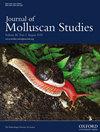遗传分析与最近人类介导的Filopaludina从印度到美索不达米亚平原的范围扩张是相容的
IF 1.2
4区 生物学
Q2 MARINE & FRESHWATER BIOLOGY
引用次数: 0
摘要
在本研究中,我们对来自幼发拉底河(伊拉克)的“Filopaludina bengalensis”种群进行了遗传分析,该种群距离其类型地点超过4000公里。通过对几个线粒体和核基因进行测序,我们旨在测试该种群是否确实属于印度的F. bengalensis,以及它与该属其他成员的关系。单倍型网络表明,他们与印度西部的人群更接近,并进一步表明,在亚化石记录的支持下,美索不达米亚平原在几个世纪前就被人类殖民了。然而,考虑到整个美索不达米亚平原的样本非常有限,需要进一步的研究,以便对该地区该物种的系统地理历史有更深入的了解。本文章由计算机程序翻译,如有差异,请以英文原文为准。
Genetic analysis is compatible with recent human-mediated range expansion of Filopaludina from India into the Mesopotamian Plain
ABSTRACT In the present study, we genetically analyse populations of ‘Filopaludina bengalensis’ from the Euphrates River (Iraq), more than 4,000 km from its type locality. By sequencing several mitochondrial and nuclear genes, we aimed to test whether this population indeed belongs to F. bengalensis from India and how it is related to other members of the genus. Our molecular phylogeny shows that the individuals from Iraq form a monophyletic group together with other populations of F. bengalensis from India and F. doliaris from Indochina. The haplotype network indicates closer affinities to populations from western India and further suggests, with support from subfossil records, that the Mesopotamian Plain was colonized by humans some centuries ago. However, given the very limited sampling across the Mesopotamian Plain, further studies are needed in order to obtain a more robust insight into the phylogeographical history of this species across the region.
求助全文
通过发布文献求助,成功后即可免费获取论文全文。
去求助
来源期刊

Journal of Molluscan Studies
生物-动物学
CiteScore
3.00
自引率
8.30%
发文量
36
审稿时长
3 months
期刊介绍:
The Journal of Molluscan Studies accepts papers on all aspects of the study of molluscs. These include systematics, molecular genetics, palaeontology, ecology, evolution, and physiology. Where the topic is in a specialized field (e.g. parasitology, neurobiology, biochemistry, molecular biology), submissions will still be accepted as long as the mollusc is the principal focus of the study, and not incidental or simply a convenient experimental animal. Papers with a focus on fisheries biology, aquaculture, and control of molluscan pests will be accepted only if they include significant advances in molluscan biology. While systematic papers are encouraged, descriptions of single new taxa will only be considered if they include some ‘added value’, for example in the form of new information on anatomy or distribution, or if they are presented in the context of a systematic revision or phylogenetic analysis of the group.
 求助内容:
求助内容: 应助结果提醒方式:
应助结果提醒方式:


